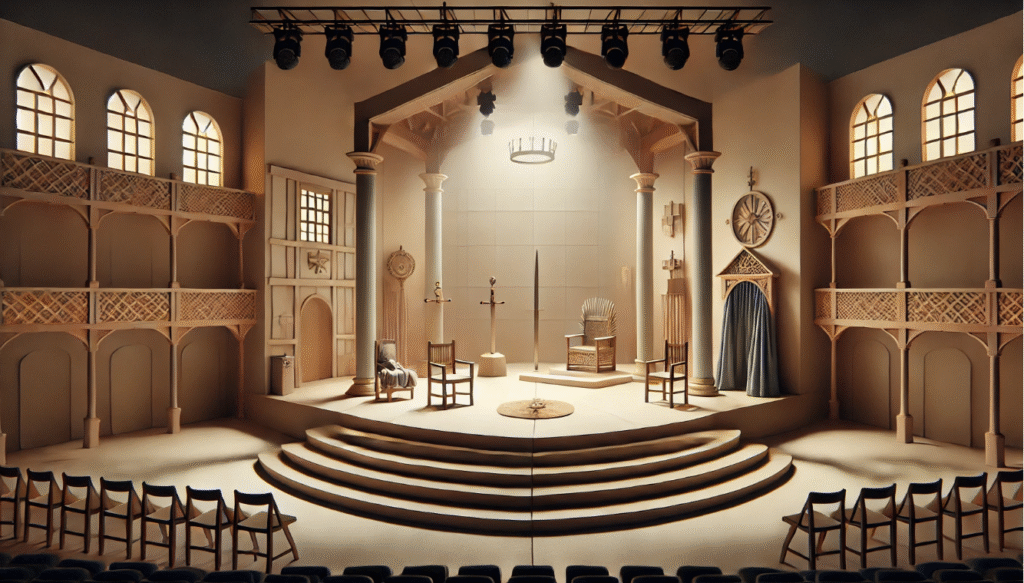
Shakespeare’s Influence on Theatre Aesthetics: How His Innovations Shaped Modern Stage Design and Performance
Shakespeare’s influence on theatre aesthetics is undeniable—his legacy continues to shape how we experience performances today. 
In this article, we’ll dive deep into how Shakespeare’s creative choices—ranging from his use of symbolic sets to his transformative approach to performance—have left a lasting impact on modern theatre. Whether you’re a stage designer, an aspiring actor, or a theatre enthusiast, understanding these principles can help you bring more depth and creativity into your work. Ready to uncover how the Bard’s timeless influence continues to shape the theatrical world? Keep reading to discover practical insights that you can apply in today’s stage productions!
Table of Contents
Toggle1. Understanding Theatre Aesthetics: A Quick Overview
Theatre aesthetics refer to the visual and sensory elements that create the atmosphere of a play. These include everything from the stage design and lighting to costumes, sound effects, and acting styles. A strong aesthetic in theatre helps tell a story, shape emotions, and engage the audience on a deeper level.
Key Aspects of Theatre Aesthetics:
Set Design
The backdrop and objects used on stage to represent the play’s setting. Whether minimalistic or elaborate, the set design sets the tone for the entire performance.
Lighting
Lighting creates mood, highlights actors, and can even symbolize a theme or character’s state of mind. For example, dim lights can evoke mystery or suspense.
Costumes
The clothing actors wear gives insight into their character’s personality, social status, and time period. It’s a crucial visual element that brings the characters to life.
Sound and Music
Music and sound effects amplify emotions and emphasize dramatic moments. Whether it’s a soft violin playing or a loud crash, sound can make or break a scene.
Acting Styles
The way actors deliver their lines and engage with the audience. It shapes the tone of the play and often reflects the director’s vision.
Each of these elements contributes to the overall aesthetic of a production, creating a cohesive experience for the audience. By mastering theatre aesthetics, designers and performers can craft memorable, impactful shows that resonate with viewers long after the curtains fall.
2. Shakespeare’s Role in Revolutionizing Theatre Aesthetics
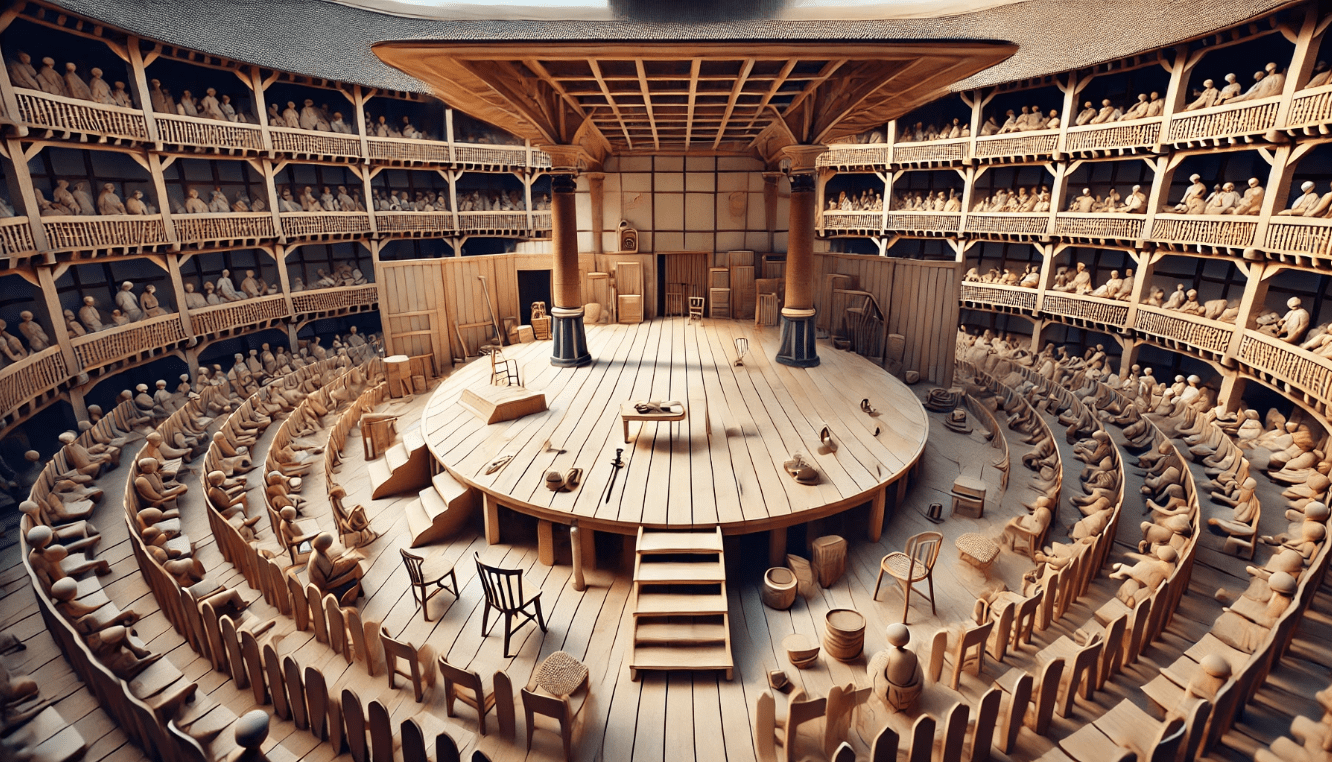
William Shakespeare didn’t just change the way stories were told on stage; he transformed the very way theatre looked and felt. While Shakespeare’s plays are renowned for their complex characters and rich language, his approach to theatre aesthetics also laid the foundation for modern stage design and performance. Here’s how Shakespeare’s innovations revolutionized theatre:
1. From Simple Staging to Evocative Imagery
In Shakespeare’s time, the stage was minimalistic—there were few props and even fewer set pieces. The Globe Theatre, where many of Shakespeare’s plays were first performed, didn’t use complex scenery or large backdrops. Instead, Shakespeare relied on the actors’ performances and the audience’s imagination to bring the setting to life.
2. The Globe Theatre: A Space of Innovation
Shakespeare’s Globe Theatre was groundbreaking in its design. The open-air structure and proximity of the stage to the audience broke down the barrier between performers and viewers, making the experience more immersive and interactive. This intimate connection is something that modern theatres strive to recreate in their designs.
3. Use of Symbolism and Suggestion in Stage Design
Rather than using elaborate backdrops, Shakespeare often relied on symbolic elements to convey the time and place of a scene. For example, a simple platform could represent a palace, and a few props could turn a bare stage into a battlefield or a forest. This approach encouraged a more imaginative and interpretative form of stage design that still influences theatre today.
4. Lighting and Natural Effects
Although artificial lighting wasn’t available in Shakespeare’s time, the natural lighting from the sun played a crucial role in setting the mood of a performance. The time of day and weather could influence the audience’s experience of the play, adding an extra layer of depth to the story.
3. Shakespeare’s Innovations in Stage Design and Performance
Shakespeare’s contributions to stage design and performance were nothing short of revolutionary. While many elements of his theatre were influenced by his era, he pushed boundaries in ways that continue to shape modern theatre aesthetics. Here are some key innovations that defined Shakespeare’s approach:

1. Minimalist Stage Design with Maximum Impact
Shakespeare’s productions were famously minimalistic in terms of set design. The stage often featured only essential props, relying on the actors’ performances and the audience’s imagination to complete the picture. For example, a simple platform could transform into a castle, a battlefield, or even a forest, depending on the actors’ interactions and the language in the script.
2. The Power of Language Over Elaborate Scenery
In Shakespeare’s plays, the richness of the language served as the primary tool for creating the world of the play. Through detailed descriptions and poetic dialogue, Shakespeare transported audiences to fantastical places, even without elaborate physical sets. This reliance on the imagination of the audience is a core principle that still informs modern theatre.
3. Lighting as a Storytelling Tool
Although Shakespeare didn’t have access to the advanced lighting techniques we use today, he understood the impact of natural lighting. The time of day, the weather, and the position of the sun in the Globe Theatre all influenced the atmosphere of the play. The changing light throughout the day became a key part of the storytelling, signaling shifts in tone or the passing of time.
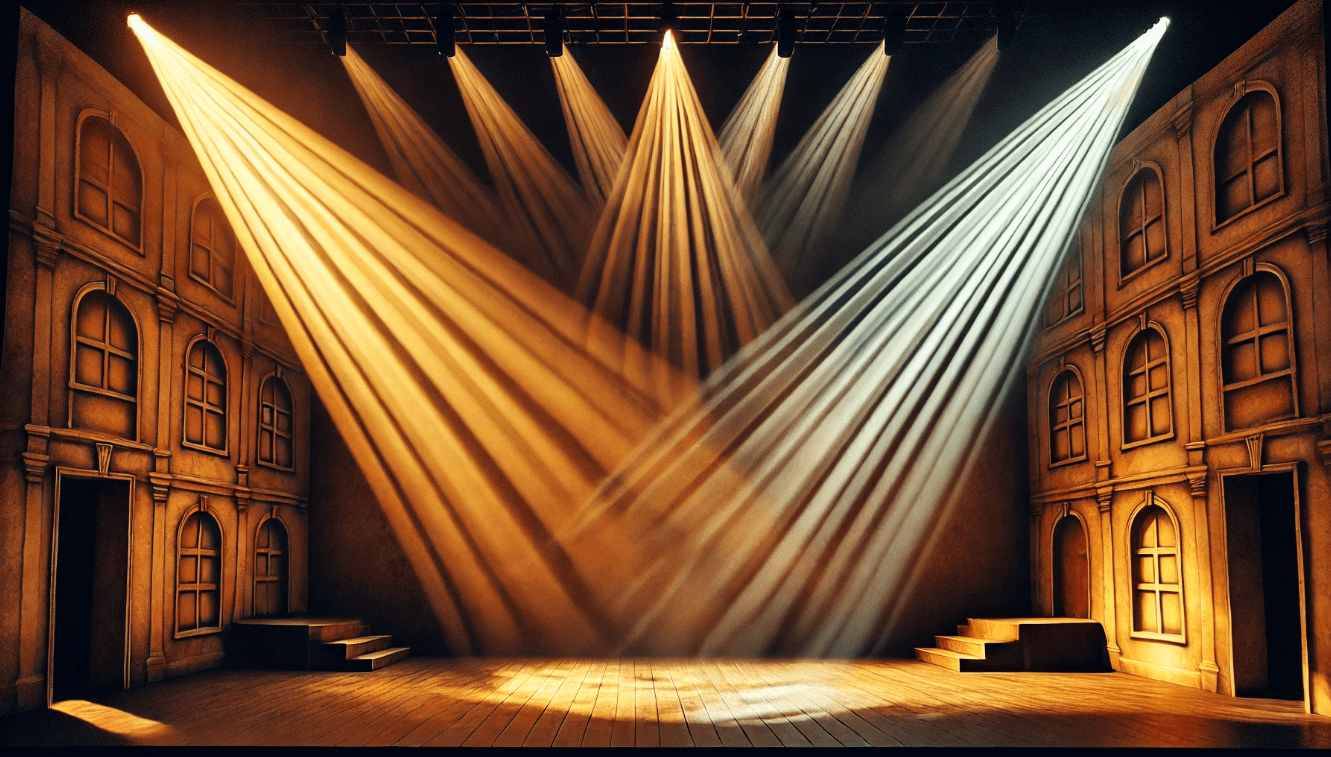
4. Symbolic and Suggestive Props
Rather than filling the stage with elaborate backdrops, Shakespeare used simple props to suggest complex environments. A sword could represent a battle, a throne could indicate a royal setting, and a simple cloth could transform into a ghostly apparition. This symbolic approach allowed for greater flexibility and creativity in the interpretation of the play.
5. Physicality and Actor-Centered Performance
Shakespeare’s plays required actors to fully embody their characters, using their bodies to convey emotions and actions. His performances were physically expressive, relying on movement and gesture as much as on words to communicate meaning. This level of physicality set a precedent for the immersive, actor-centered performances that we see today.
4. Shakespeare’s Influence on Modern Theatre Aesthetics
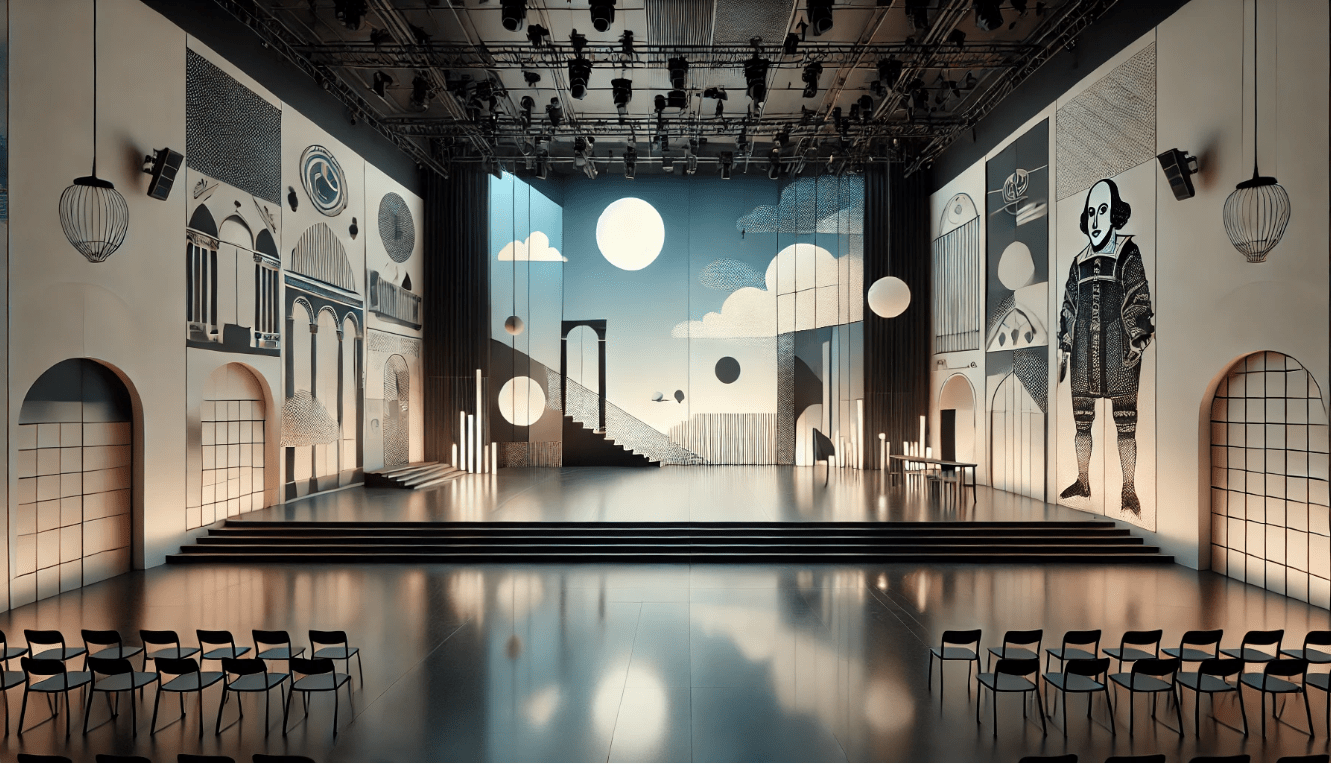
Shakespeare’s legacy is not only alive in the words he wrote but also in the aesthetics of modern theatre. His innovations continue to inspire contemporary designers, directors, and performers, shaping how we create and experience theatre today. Here’s how Shakespeare’s influence has permeated modern theatre aesthetics:
1. Emphasis on Minimalist Stage Design
One of Shakespeare’s most enduring contributions to theatre aesthetics is his minimalist approach to stage design. Rather than relying on elaborate sets, Shakespeare used minimal props and relied heavily on the audience’s imagination. Modern theatre has embraced this concept, focusing on symbolic and suggestive designs rather than detailed backdrops.
2. Symbolic Use of Props and Set Elements
Shakespeare’s clever use of props, such as swords, crowns, and cloths, transformed a bare stage into various worlds. This symbolic use of minimal props is still widely used today to convey complex ideas or themes with simple elements.
- Key Takeaway: Modern designers often use symbolic props in the same way. For example, a single chair can signify royalty, while a lantern might represent mystery. This symbolic economy allows for creative interpretations and more meaningful stage designs.
3. The Revival of Open-Air Theatre
The Globe Theatre’s open-air design, where audiences were seated on three sides of the stage, encouraged intimacy between performers and spectators. Today, open-air theatres and festivals, such as Shakespeare in the Park, are a direct continuation of this influence. These spaces recreate the interactive and immersive experience of Shakespeare’s original productions.
4. Immersive and Conceptual Stage Design
Shakespeare’s reliance on storytelling over complex visuals paved the way for the rise of conceptual theatre. Today, directors and designers often use abstract or immersive sets to convey mood and themes rather than trying to replicate reality. The idea is to evoke emotion and imagination, rather than simply represent a physical setting.
5. Lighting and Atmosphere
Shakespeare understood the power of light in creating atmosphere. The natural daylight that streamed into the Globe Theatre set the tone for the play, signaling the time of day and contributing to the mood of a scene. Today, lighting is one of the most powerful tools in theatre, used to create mood, highlight actors, and transform the stage environment.
6. Actor-Centered Performance
Shakespeare’s plays were crafted to showcase the depth of his characters, relying on actors to bring them to life through their performance. This actor-centered approach, where the focus is on storytelling and character development, continues to shape the way modern theatre is performed.
7. The Enduring Popularity of Shakespeare’s Works
The continued success of Shakespeare’s plays in modern theatre—whether through traditional productions or contemporary adaptations—demonstrates his lasting influence. Directors often reinvent his plays with modern settings or innovative designs, proving that his aesthetics can transcend time.
5. Practical Applications for Stage Designers Today
Shakespeare’s innovations in theatre aesthetics continue to offer valuable lessons for stage designers today. By drawing inspiration from his minimalist, symbolic, and actor-driven approach, modern designers can create immersive, dynamic productions. Here’s how you can apply Shakespeare’s principles to your own work:
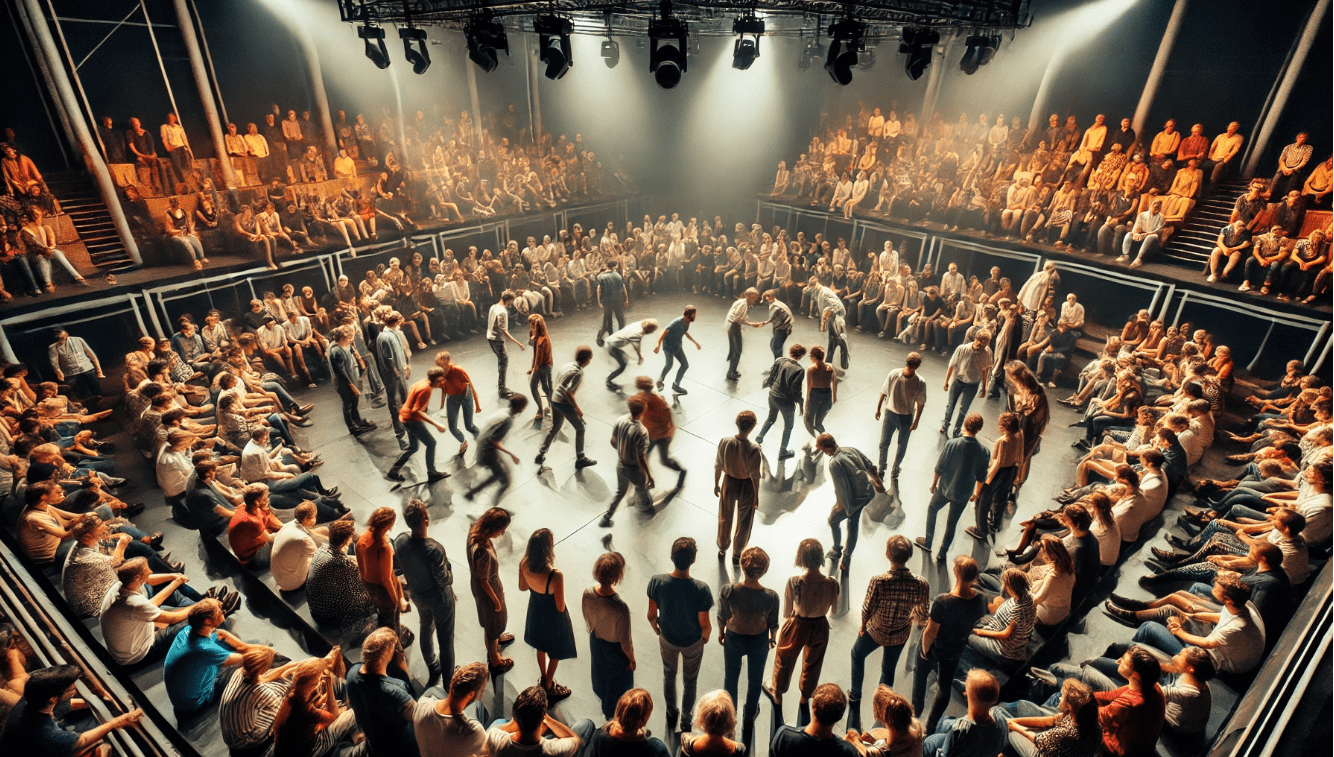
1. Embrace Minimalist Set Design
Shakespeare often used minimal props to convey complex settings, allowing the actors and the language to define the environment. In modern theatre, this approach can make productions more flexible and creative, focusing the audience’s attention on the performance rather than the set.
2. Focus on Symbolism, Not Detail
Shakespeare’s sets were simple but loaded with meaning. A single prop or element could symbolize an entire world. Modern designers can use this concept to convey deeper meanings without overcrowding the stage.
3. Use Lighting to Enhance Emotion
Lighting played a crucial role in Shakespeare’s productions, helping to create mood and atmosphere. While he relied on natural sunlight, today’s designers have a variety of tools at their disposal to create mood changes and highlight different elements of a scene.
4. Create Immersive Experiences for the Audience
Shakespeare’s open-air Globe Theatre created a unique connection between actors and audience, with the stage right in front of the crowd. Today, many designers aim to replicate this intimacy, using thrust stages or even promenade performances where the audience moves with the action.
5. Maximize the Actor’s Role in Storytelling
Shakespeare’s theatre was built around strong performances. The language, physicality, and emotion of the actors were the primary means of storytelling. Modern productions continue to rely heavily on the actor’s ability to convey depth through their performances.
6. Adapt Shakespeare’s Flexibility to Contemporary Themes
One of Shakespeare’s strengths was his ability to adapt his themes to fit different settings. Today, many directors adapt Shakespeare’s plays for contemporary audiences, using modern settings and visuals while retaining the core of his work.
6.Common Challenges in Implementing Shakespearean Aesthetics Today
While Shakespeare’s innovations in theatre aesthetics are timeless, translating his minimalist and symbolic approach into modern productions can be challenging. Here are some common obstacles that stage designers and directors may face when attempting to implement Shakespearean aesthetics today—and how to overcome them:
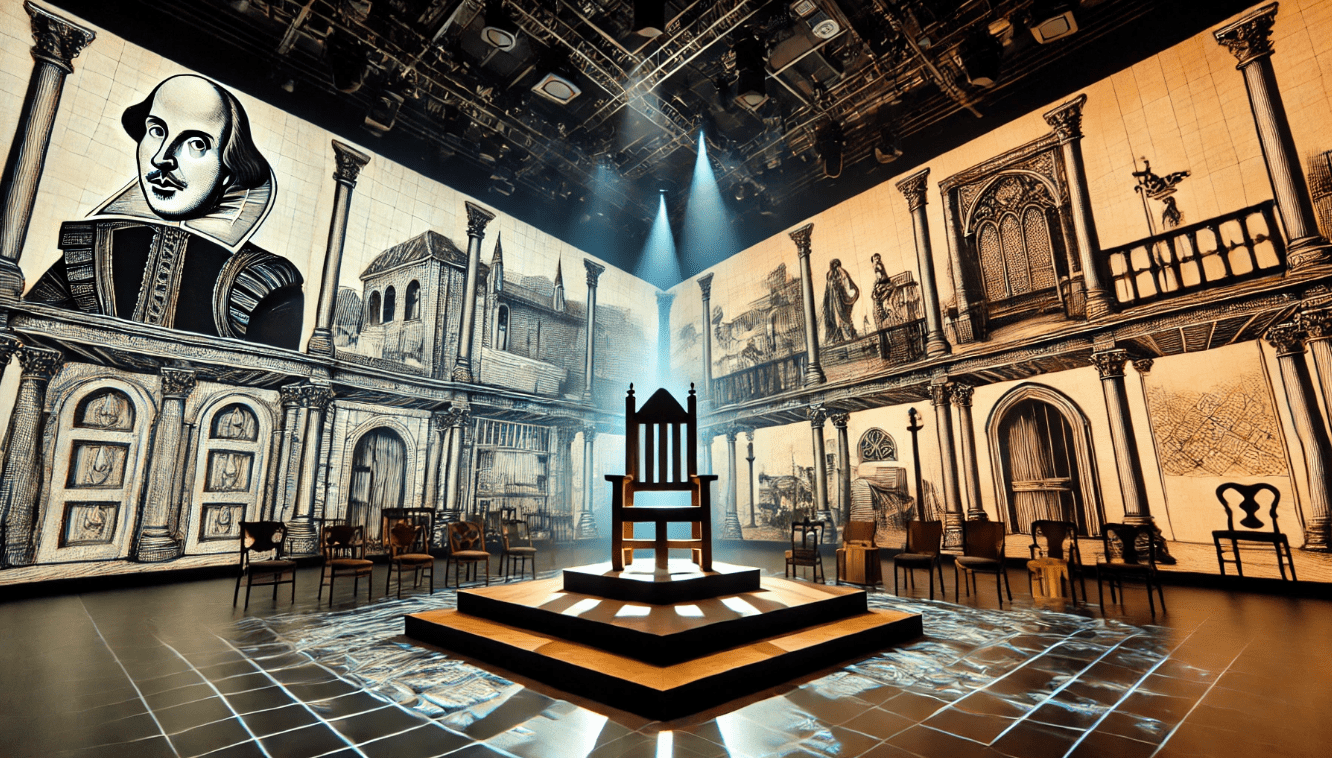
1. Balancing Minimalism with Modern Expectations
Shakespeare’s minimalistic approach to sets and props might feel outdated in an era where audiences expect high-tech special effects and elaborate set designs. Achieving the balance between simplicity and modern visual expectations can be tricky.
2. Adapting Shakespeare’s Language to Modern Audiences
Shakespeare’s language can be difficult for some modern audiences to fully appreciate, especially if they are unfamiliar with the structure and flow of Elizabethan English. This can make it hard to connect his rich language with a minimalist set
3. Creating Intimacy in Large Venues
The Globe Theatre’s open-air design fostered a strong connection between the audience and the actors. However, in large, modern theatres with vast seating arrangements, recreating this intimacy can be a significant challenge.
4. Technology’s Influence on Performance and Design
With the rise of digital technology, modern theatre often incorporates elaborate digital effects, projections, and 3D elements, which can distract from the minimalist principles Shakespeare championed.
5. Maintaining Authenticity While Modernizing
Shakespeare’s works have been modernized countless times, but keeping the integrity of his aesthetic vision while adapting to contemporary styles can be a fine line to walk.
6. Financial and Resource Constraints
Not all theatre productions have the budget to create elaborate set designs or acquire advanced technology, making it difficult to apply Shakespeare’s minimalist aesthetic while meeting audience expectations for visually spectacular productions.
Shakespeare’s influence on theatre aesthetics is as powerful today as it was over 400 years ago. His minimalist stage design, symbolic use of props, and deep focus on storytelling continue to inspire modern theatre creators around the world.
Whether you’re a stage designer, director, or theatre student, applying Shakespeare’s principles can help you craft performances that are not only visually compelling but emotionally resonant. From embracing simplicity to enhancing actor-audience connection, his timeless techniques offer practical tools for today’s stage.
While challenges like modern audience expectations and budget limitations exist, Shakespeare’s legacy proves that powerful theatre doesn’t require elaborate sets or flashy effects—it needs creativity, clarity, and heart.
Frequently Asked Questions (FAQs)
1. How did Shakespeare influence modern stage design?
Shakespeare revolutionized stage design by emphasizing minimalism and symbolic props rather than elaborate sets. His use of simple yet suggestive elements allowed the audience’s imagination to fill in the gaps. Modern stage designers often apply this principle, focusing on storytelling through minimalistic, symbolic set pieces and lighting. 🎭
2. Why is minimalist stage design important in modern theatre?
Minimalist stage design, inspired by Shakespeare, draws attention to the performance itself, rather than overwhelming the audience with complex scenery. It allows for greater creative flexibility and enables the actors’ performances and the narrative to take center stage. 🌟
3. How did Shakespeare’s Globe Theatre impact modern theatre design?
The Globe Theatre’s open-air design and intimate connection between actors and audience set a precedent for modern, immersive theatre. This layout encouraged greater audience interaction and influenced the design of contemporary venues that aim to create a closer, more engaging experience for viewers. 🏛️
4. What role did lighting play in Shakespearean theatre?
Although Shakespeare had no access to artificial lighting, the natural light from the sun played a crucial role in creating atmosphere during his productions. Modern lighting design draws from this approach, using light and shadow to evoke mood, highlight key moments, and enhance storytelling. 💡
5. How did Shakespeare’s use of props shape modern theatre aesthetics?
Shakespeare used minimal props, allowing a single object to symbolize entire worlds, such as a sword representing a battle or a crown denoting royalty. This approach influences modern theatre, where symbolic props are used to represent deeper themes, enabling versatile stage designs. 🌱
6. How can stage designers apply Shakespeare’s aesthetic principles today?
Modern stage designers can apply Shakespeare’s principles by using simple, symbolic elements that support the storytelling. Emphasizing the actor’s performance and minimizing distracting set pieces allows the audience to focus on the narrative, much like Shakespeare’s own productions. 🎬
7. What is the connection between Shakespeare’s acting style and modern performances?
Shakespeare’s acting style relied on physicality and expressive language, with actors conveying emotion through gestures and movements. Modern theatre continues to value strong performances that prioritize emotional depth, allowing actors to connect with audiences beyond the words on the page. 👏
8. What challenges do modern designers face when applying Shakespearean aesthetics?
Modern designers often face the challenge of balancing Shakespeare’s minimalist style with the high expectations for visually dynamic, tech-driven performances. Overcoming this involves using creative lighting, symbolic props, and flexible designs that focus on storytelling, without overwhelming the stage with excessive visuals. 🌟




